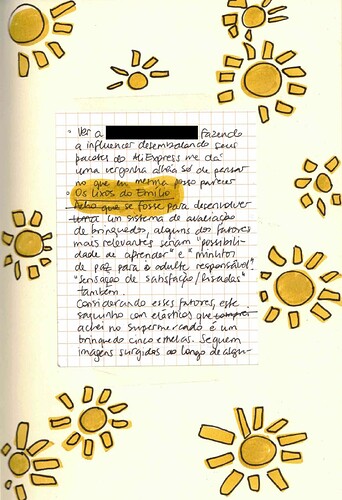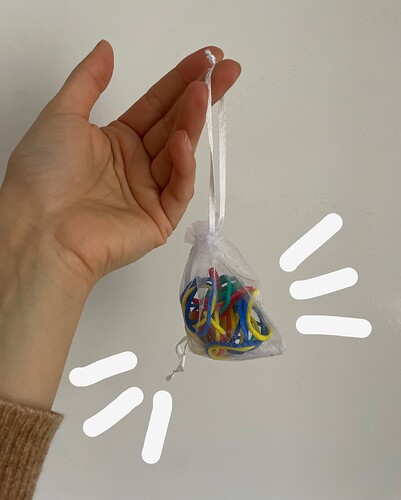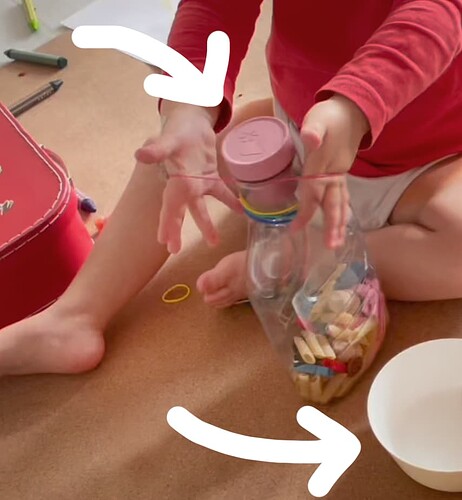Emilio’s treasures - elastic bands
If I were to develop a toy evaluation system, some of the most relevant factors would be
- possibility of learning
- minutes of peace for the adult in charge
- satisfaction / chance of laughter
Considering these factors, these elastic bands I found in the supermarket and put into this little bag are a five-star toy.
-
Changing containers: always goes. I like them to have different sizes, different materials, colors and textures.
-
Activating different skills: since rubber bands are elastic, it is challenging to “master” the material. Stretch them to involve a cylinder, make them fit into a tiny space, pile them up. What always goes is to sort them by color and size.
-
Giving space: when I want my child to learn a specific skill (e.g. putting the rubber bands around the bottle neck), I show it one time at a very slow pace and in detail – without saying anything – and let them figure it out by themselves. I only interfere if I am called to help. And then, I do the presentation again – I don’t help my child to do it themselves.
![]() If you are interested in some theory about playing with simple materials, you can look into Maria Montessori’s and Emmi Pikler’s writings. They worked with working class children and their research and practice was rooted in making learning rich and accessible. So expensive toys being sold under their name… are a scam.
If you are interested in some theory about playing with simple materials, you can look into Maria Montessori’s and Emmi Pikler’s writings. They worked with working class children and their research and practice was rooted in making learning rich and accessible. So expensive toys being sold under their name… are a scam.


